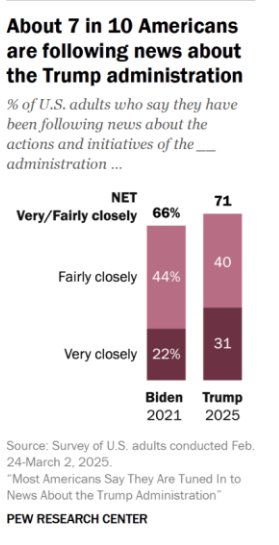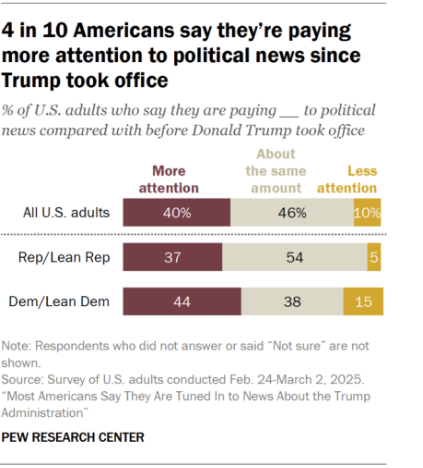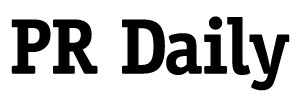How American news consumption has changed since Trump took office
The president is changing so much of American life. How we interact with the news is no exception.

Pew Research has released a new study that reveals that more Americans are paying close attention to the news under the Trump administration than they did the Biden at the same point in his term. This presents communicators with the possibility of reaching a bigger audience than they have in the past – but also brings with it the dangers of audience burnout, increasing polarization of news sources and overtaxed reporters straining to cover an onslaught of news.
Here’s how this could impact your communications practice – today and for the next four years.
More Americans are tuning in
Seventy-one percent of Americans are following news about the presidency very or fairly closely, the survey found. That’s a five-point increase from the same point in the Biden administration.

We see an even more dramatic change when we look at Americans who are specifically following the news very closely. That number jumped from 22% in 2021 to 31% today – a marked increase in people who are taking an active interest in the news. These numbers remain relatively consistent across parties. Forty percent say they’re paying more attention to the news now than before Trump took over. However, some Democrats have tuned out entirely – 15% of those who lean left say they aren’t paying any attention at all, compared to 10% of the general population and 5% of Republicans.

When asked why they’re more invested in the news, the answers showed anxiety about the Trump administration’s actions. Sixty-six percent of respondents said they were concerned about what the administration was doing, compared to 36% who said they tuned in because they like what the White House is doing. Another 62% give the neutral answer that following the news is relevant to their life, while 43% just say it’s hard to avoid the news.
For those who aren’t following political news, 49% just say they’re “worn out by the amount of it,” a common news fatigue response in an era where political news can sneak in right next to an update about your cousin’s marriage or a new song from your favorite musician.
What it means for comms
This current view of political news holds both promise and peril for PR pros. On the one hand, a rising tide lifts all ships. As more people tune into the news, your placement, even if it isn’t about politics, may get more eyeballs if it’s located next to a political story on a website or a news broadcast. Or the political news could suck all the energy out of audiences to read about anything else.
We can also expect to see media outlets adjusting their news based on what people are reading. If there is more desire for political news, as these numbers might suggest, more reporters could be assigned to the politics beat, leaving fewer bodies to cover business, lifestyle and other beats that might be attractive to your organization.
As with so much of this political moment, the answer is uncertain. But one tactic is to reach out to the journalists with whom you do have a relationship and ask what they’re seeing. What their needs are. What audiences are responding to. How you can best help them cope with this moment. Rather than guessing what might help, leverage those close ties to better understand how you can be a resource in a crazy, uncertain time for journalists as well.
Allison Carter is editorial director of PR Daily and Ragan.com. Follow her on LinkedIn.







